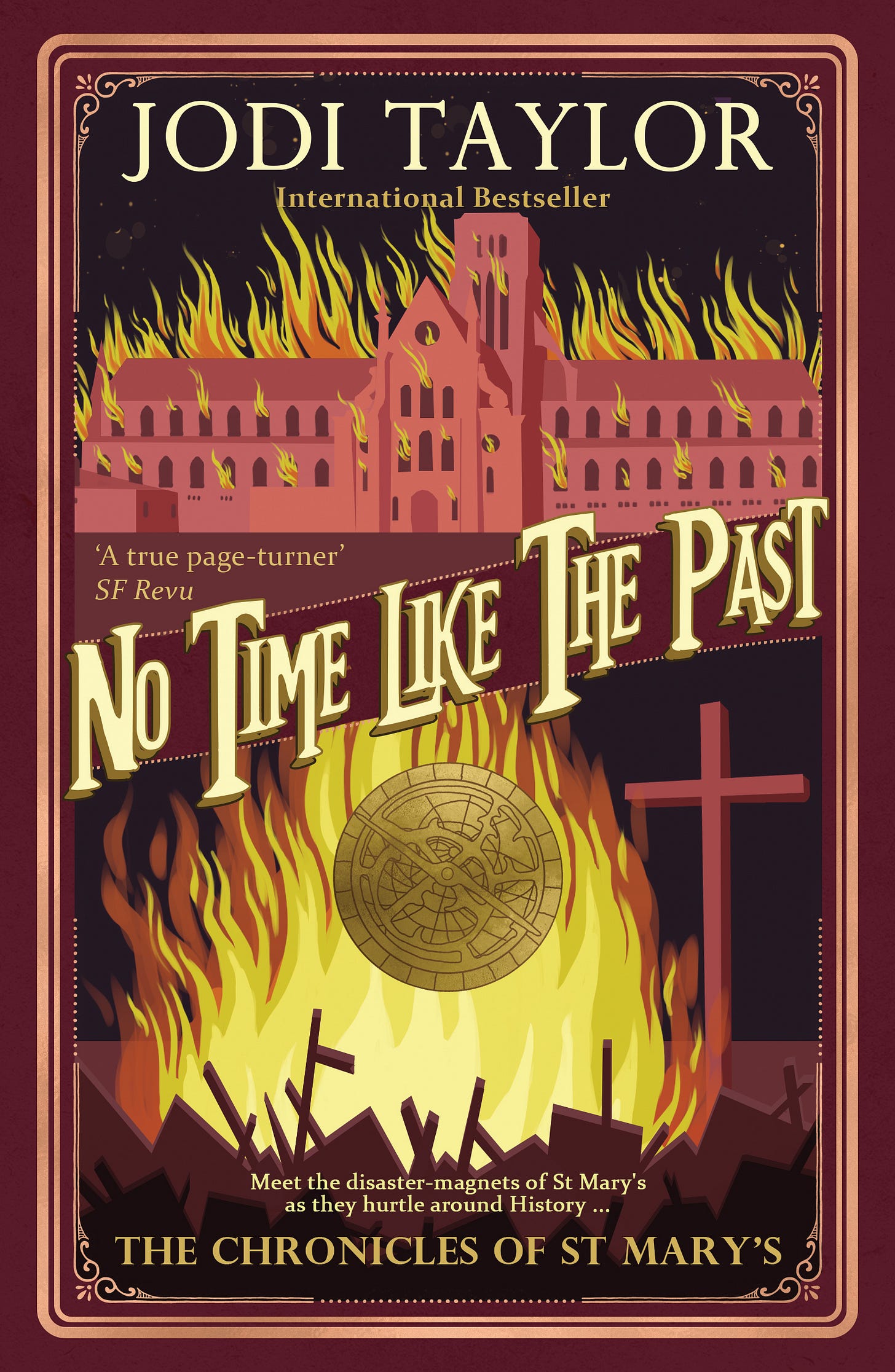The Great Exhibition at the Crystal Palace: A Landmark Event in Victorian History
Featured in "No Time Like The Past" by Jodi Taylor
In “No Time Like the Past” by Jodi Taylor, Max and the team from St Mary’s Institute of Historical Research jump back to Victorian London and The Great Exhibition at Crystal Palace.
The Great Exhibition held at the Crystal Palace in London in 1851 stands as a pivotal moment in the history of industry, culture, and international relations. Organized by Prince Albert, husband of Queen Victoria, the exhibition showcased the technological prowess and artistic achievements of nations from around the world, leaving an indelible mark on Victorian society and laying the groundwork for future world's fairs.
The idea for the Great Exhibition emerged from discussions among members of the Royal Society and the Society of Arts, who sought to organize an event that would celebrate the advancements of the industrial age and promote international cooperation. Prince Albert, inspired by the success of similar exhibitions in Europe, championed the idea and assumed a leading role in its planning and execution.
To house the exhibition, a ground-breaking structure known as the Crystal Palace was designed by architects Joseph Paxton and Charles Fox. Constructed of iron and glass, the Crystal Palace was a marvel of engineering innovation, spanning over 1,800 feet (550 meters) in length and rising to a height of 108 feet (33 meters). Its innovative design allowed for maximum natural light to illuminate the interior, creating a breath-taking display of the exhibits housed within.
The Great Exhibition featured over 100,000 exhibits from countries around the world, showcasing the latest advancements in industry, science, and the arts. Visitors marvelled at displays of machinery, textiles, ceramics, and other manufactured goods, as well as scientific instruments, fine art, and cultural artifacts.
One of the most popular attractions was the Koh-i-Noor diamond, which had recently been acquired by the British East India Company and was put on display for the first time. The exhibition also featured the world's first public toilets, designed by George Jennings, which quickly became a sensation among visitors.
The Great Exhibition had a profound impact on Victorian society, both in Britain and abroad. It fostered a sense of national pride and optimism about the future, as well as a belief in the power of technology and innovation to improve the human condition. It also promoted international trade and diplomacy, paving the way for increased cooperation and exchange between nations.
On November 30, 1936, a devastating fire engulfed the iconic Crystal Palace in London, bringing an abrupt end to one of the most celebrated landmarks of Victorian England. The fire, which broke out during a Sunday afternoon performance, quickly spread throughout the vast structure, reducing it to smouldering ruins and marking the conclusion of an era.
Despite efforts to save the building, including the deployment of over 400 firefighters and the use of water cannons, the fire proved unstoppable. Flames tore through the structure, devouring its wooden floors and furnishings, while the intense heat caused the glass panels to shatter and collapse. By the time the blaze was brought under control, the Crystal Palace lay in ruins, a mere shadow of its former grandeur.
The loss of the Crystal Palace was keenly felt by the people of London and beyond, who mourned the destruction of this beloved landmark. In the aftermath of the fire, questions were raised about the cause of the blaze, with some speculating that it may have been the result of arson or electrical faults. However, no definitive explanation was ever reached, and the true cause of the fire remains a mystery to this day.
The Great Exhibition at the Crystal Palace remains a landmark event in Victorian history, symbolizing the spirit of innovation, progress, and international cooperation that characterized the era. By bringing together nations from around the world to celebrate human achievement, the exhibition laid the groundwork for a new era of globalization and cultural exchange, leaving a lasting legacy that continues to inspire and captivate imaginations to this day.
Find out how Max and the team fared at The Great Exhibition by reading “No Time Like the Past” by Jodi Taylor.
Have you discovered The Official Reading Companion and History Briefings for The Chronicles of St Mary’s series by Jodi Taylor?
If you've ever found yourself wondering who did what, when, and where in Jodi Taylor’s brilliant Chronicles of St Mary’s series — this is the companion guide you’ve been waiting for.
This guide is a must-have for both dedicated fans and curious newcomers. It contains synopses of every book and short story, detailed floor plans of St Mary’s Institute for Historical Research, History Briefings, chronological jump lists, character information, and more.
Whether you’re brushing up on the timeline or want to immerse yourself further in the chaos and charm of St Mary’s, this guide is your ultimate companion.
CLICK HERE to learn more.
I hope you have enjoyed this foray into history. Please subscribe to read more articles like this.





"The exhibition also featured the world's first public toilets, designed by George Jennings, which quickly became a sensation among visitors."
An innovation I am sure that we are all grateful for.